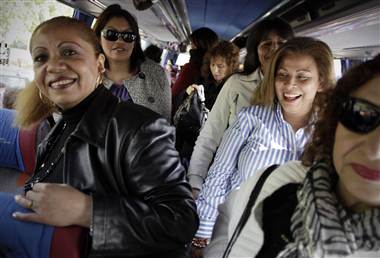1576 |
1633
|
1708 |
1719
|
1720 |
1726
|
1732 |
1735
|
1736 |
1737
|
1739 |
1740
|
1747 |
1751
|
1756 |
1757
|
1758 |
1760
|
1761 |
1762
|
1764 |
1769
|
1772 |
1773
|
1774 |
1777
|
1778 |
1781
|
1782 |
1786
|
1787 |
1788
|
1789 |
1790
|
1791 |
1792
|
1793 |
1794
|
1795 |
1796
|
1797 |
1798
|
1799 |
1800
|
1801 |
1802
|
1803
Introduction
The Church in
Louisiana and Florida, 1513-1815
Bibliographical
Note
Provenance
Editorial
Procedure
Explanation of
the Calendar
Description of
the Collection
Alphabetical List
This guide and the accompanying rolls of microfilm are being published
by the University of Notre Dame archives under the sponsorship of the
National Historical Publications Commission.
The initial step in the program of publishing manuscripts having a
significant relevance to American History was taken in 1950 when
President Truman directed the National Historical Publications
Commission to draw up a plan for making such material readily
available for scholarly use. The Commission's Report was submitted to
President Eisenhower in 1954 and, in the succeeding decade, the
Commission encouraged the editing and publishing of various
collections, including the Jefferson Papers, the Adams Papers, and the
Franklin Papers.
In 1963 the Commission recommended to President Kennedy a ten-year
program of publication to be financed by the Federal Government as
well as by private sources. The Report, stressing the importance of a
citizenry well instructed in American History, recommended the
increased use of microfilm as a means of making available, as
inexpensively as possible, significant source material. In 1964
Congress enacted legislation authorizing the Commission's grant
program and the first funds were allocated for the support of projects
deemed worthy of approval by the Commission. Early in 1965 the
Commission approved a grant to the University of Notre Dame Archives.
The project was commenced in June, 1965.
In the task of preparing the Records of the Diocese of Louisiana
and the Floridas for microfilming we have been aided by Mr. Norman
Leslie Smith III, Mr. Charles Gensheimer, Mrs. Janet Ubelhart, and
Miss Mercedes Muenz. A debt of gratitude is owed to Dr. Oliver W.
Holmes, to the National Historical Publications Commission, and
especially to Mr. Fred Shelley of that Commision for his wise counsel
and encouragement. The information acquired at the Frebruary, 1966,
meeting at the National Archives in Washington D.C. of representatives
from institutions preparing microfilm publications under grant from
the Commission has been invaluable.
Lawrence J. Bradley, LL.B., M.A.
Manuscripts Preparator
Notre Dame, Indiana
April 1967
Although the Diocese of Louisiana and the Floridas, later to be known
as the Diocese of
New
Orleans, was formally erected only on April 25, 1793, by Pope Pius
VI, the area embraced within its confines had had a long
ecclesiastical history prior to that time. Following the discovery of
Florida by Ponce de Leon in 1513, Spain made several attempts to
explore and tame the wild lands of southeastern North America. Acting
by virtue of the Patronato Real de Indias or Royal Patronage of the
Indies -- a recognition accorded to the Spanish sovereigns by the
Roman Pontiffs of extensive control over and responsibility for the
ecclesiastical administration of the Indies -- King Charles I, pending
approval from the Holy See, provided for the erection of a Diocese of
Florida which was to embrace the whole territory along the Gulf coast
from the Cape of Florida to the Rio Grande.
The proposed See, however, never actually materialized, and the
Fransiscan, Juan Suarez, who had been chosen to be its bishop,
perished while accompanying the ill-fated de Narvaez expedition to the
area. Following the failure of De Soto's expedition (1539-1543), Spain
made no further effort to conquer and colonize the lands bordering the
Mississippi. Instead, she confined her efforts to Florida and the
southwest.
The French, solidly established in Canada by the mid-seventeenth
century, soon began to encroach upon the territory to the south which
had been claimed initially by Spain. After La Salle and his party
reached the mouth of the Mississippi in 1682, Louisiana became
definitely French territory. Here, as in the Spanish domains, Church
and State were bound closely together with the French monarch
exercising considerable control over and bearing considerable
responsibility for ecclesiastical affairs. After an initial attempt to
establish an independent Viciariate Apostolic for the area failed
because of the opposition of Bishop St. Vallier of Quebec, Louisiana
in 1688 was recognized formally as belonging within the Diocese of
Quebec.
In 1699 the priests of the Seminary of Quebec, an outgrowth of the
Seminary of Foreign Missions at Paris, began their priestly labors in
the area. They were soon joined by the Jesuits. In 1712 Louisiana
became a proprietary colony under the wealthy Antoine Crozat who had
obtained a fifteen-year lease from the French crown. Finding the
venture to be unprofitable, Crozat relinquished his lease in 1717. The
colony then reverted to the French crown which turned it over to John
Law's Company of the West. The obligation of providing for the
religious needs of the territory, which included the nomination and
maintenance of priests as well as the building of churches, devolved
upon Law's Company.
Actual ecclesiastical supervision over the territory continued to
be exercised by remote control through a local vicar general. Although
a Frech Capuchin, Louis-Francois Duplessis de Mornay, was chosen
coadjutor to Bishop St. Vallier of Quebec in 1713 and, as such,
entrusted with the care of Louisiana, he never visted the colony. In
1717 Spain showed a renewed interest in the westen part of the
territory and a mission, staffed by Spanish Franciscans, was
established at Los Adayes, twenty-one miles from Natchitoches. In 1720
French Carmelites were introduced into the territory but they were
soon replaced by French Capuchins from the Province of Champagne under
an agreement between the Company of the West, the Capuchins, and
Bishop de Mornay. The Capuchins were to serve the French posts in the
territory while the Jesuits were to continue serving the Indian
missions.
Unfortunately, years of friction ensued between the two missionary
groups until the eventual suppression of the Jesuits in the colony in
1763 following their suppression in France. In 1727 a band of French
Ursuline Nuns arrived in New Orleans where they established a convent
and a school for girls and began the task of attending to the Royal
Hospital. In 1731 the colony again changed hands as the Company of the
West relinquished its lease and returned it to the direst supervision
of the French crown. There it remained until it was ceded to Spain by
the secret treaty of Fontainebleau in 1762. The actual transfer,
however, was not completed until 1769 when Spanish forces
Captain-General Alexander O'Reily succeeded in putting down a
rebellion of a segment of the French population.
Meanwhile, Florida, which from the time of its discovery had
remained Spanish territory, was passing into the hands of England,
having been ceded to her by the Treaty of Paris in 1763. There, St.
Augustine had been founded in 1565 and missionary activity had been
undertaken first by secular clergy, then by Jesuits, and finally by
Franciscans. Although the Franciscans had succeeded in establishing a
number of flourishing missions among the Indians, these were dealt a
blow from which they never recovered by the destructive English raids
of 1702-1704 led by onetime Governor James Moore of Carolina. In 1709
Dionisio Resino was named auxiliary to the Bishop of Santiago de Cuba,
the diocese to which Florida belonged, and entrusted with the care of
Florida. After three weeks' residence in the territory he was so
disheartened by the conditions prevailing there that he returned to
Cuba.
In 1735 Francisco de San Buenaventura y Tejada, appointed auxiliary
to the Bishop of Santiago de Cuba in 1731, finally arrived in Florida.
When he was translated to the See of Yucatan in 1745, Pedro Ponce y
Carrasco was named his successor but did not sail to Florida until
nine years later. Once there, he remained only nine months. In
1762-1763, on the eve of its cession to England, the territory
received an impromptu episcopal visitation by Bishop Pedro Augustin
Morrell of Santiago de Cuba as he was returning from English captivity
by Charleston, South Carolina.
While acquiring Florida from Spain, England in 1763 also acquired
from France a thin strip of territory extending westward along the
Gulf to the Mississippi. By a royal proclamation of the same year two
royal colonies were formed of the territory thus acquired: East
Florida, which extended west to the Charrahoochee River and had St.
Augustine as its capital, and West Florida, which extended west from
the Chattahoochee River to the Mississippi and had Pensacola as its
capital. Although the British sovereign pledged to allow Catholics
freedom of worship insofar as the laws of Great Britain permitted, a
wholesale exodus of the Spanish population took place, and as a result
Catholicism all but disappeared from the area. A small revival came
five years later when Andrew Turnbull, a Scottish physician turned
colonizer, established a plantation composed largely of Catholic
Minorcans at New Smyrna on the Atlantic coast, seventy-four miles
south of St. Augustine.
Before long the territory was once again in Spanish hands. In 1779
Spain officially threw in her lot with the American revolutionaries
and attacked British West Florida. Mobile fell to her in 1780 and
Pensacola in 1781. The remainder of the Floridas was returned to her
by treaty in 1783. Once again under the ecclesiastical jurisdiction of
the Bishop of Santiago de Cuba, the Church in the territory was
confronted with a twofold task: the reduction of Spaniards, Minorcans
and French to ecclesiastical unity under the Spanish Patronato Real
and the conversion of Anglo-American settlers. While Bishop Santiago
Joseph de Hechavarria y Elguezua of Santiago de Cuba was primarily
responsible for ecclesiastical affairs in these remote areas of his
diocese, the actual supervision was entrusted to two vicarios, Father
Thomas Hassett, an Irish priest from Spain, who was sent to reside at
St. Augustine and care for East Florida, and Father Cirilo Sieni de
Barcelona who resided in New Orleans and was charged with the care of
the joint province of Louisiana - West Florida.
By this time, the Spanish authorities had come to recognize the
need for a resident bishop on the mainland. A proposal was drawn up
for the appointment of an auxiliary to the Bishop of Santiago de Cuba
to reside in New Orleans. The plan was approved by Rome and in 1781
King Charles III of Spain asked Bishop Hechavarria to propose Father
Cirilo for the post. Although Cirilo was officially notified of this
appointment on July 18, 1782, bulls were not issued by Pope Pius VI
until June 6, 1784, and Cirilo's consecration did not take place until
March 6, 1785.
Meanwhile, it had become evident that the administrative work of
the vast Diocese of Santiago de Cuba was too great a burden for its
bishop. Eventually, by a consistorial decree of September 10,1787,
that diocese was split in two and the new Diocese of St. Christopher,
with its episcopal seat at Havana, was erected. The mainland
territories of Louisiana and the Floridas were placed under its
jurisdiction. Bishop Felipe Joseph Trespalacios of Puerto Rico was
transferred to the new diocese and Bishop Cirilo became his auxiliary.
Subsequent events, marred by friction between the two bishops, soon
demonstrated the unfeasibleness of such a division of authority. By
1791 King Charles IV had decided upon a further division of the
Diocese of St. Christopher. Rome was consulted and on April 25, 1793,
Pope Pius VI issued a bull establishing the Diocese of Louisiana and
the Floridas. Auxiliary Bishop Cirilo was recalled and Luis Ignacio
Maria de Penalver y Cardenas, a forty-four-year-old native of Havana,
was named bishop.
Consecrated at Havana on April 25, 1795, Bishop Penalver arrived in
New Orleans on July 17 and took formal possession of his See on July
24. He was confronted immediately with a multitude of distressing
problems. A general spirit of indifference and even scorn for
religion, fostered in part by the spread of Voltairianism and
revolutionary ideologies from France, combined with the perennial
shortage of priests, the distinct aversion of the French population
for everything Spanish, and the deeply rooted moral abuses that had
developed under pioneer colonial conditions to burden the bishop
during his six-year administration of the diocese. Eventually, even
his great zeal could no longer sustain him in the face of such
appalling conditions and he petitioned the king for a change to some
other diocese. His request was granted. On July 29, 1801, Rome
formally announced his appointment to the Archdiocese of Guatemala.
Envisioning only a brief interval before the arrival of a successor,
he appointed Father Thomas Hassett administrator and Father Patrick
Walsh assistant administrator before leaving Louisiana in November of
that same year.
Events were to prove Penalver's prognostication wrong and to
undermine the arrangements he had made for the interim administration
of the vacant See. Louisiana was to be without a bishop for the next
fourteen years. Although Francisco Porro y Peinado, a Spanish Minim,
was selected for the post early in 1801, rumors of the impending
transfer of Louisiana from Spain to France caused him to delay his
departure. Eventually in 1803, before he had ever formally taken
possession of the diocese, he was transferred to the Diocese of
Tarazona in Spain. The unexpected duration of the period of
administration and the complications created by the retrocession of
the Louisiana Territory to France and its subesequent sale to the
United States in 1803, which brought to an abrupt end the close
relationship that had existed between Church and State, combined to
create for Father Hassett unexpected difficulties, not the least of
which was an end to the financial subsidies which the state had
granted to the Church under both the Spanish and French regimes.
The situation worsened upon the death of Hassett in 1804. Although
Father Walsh then claimed authority by virtue of his appointment as
assistant administrator, his claim was disputed by Father Anthonio de
Sedella, the Capuchin rector of the Cathedral, who unfortunately had a
substantial popular following. Likewise, in 1806 Bishop Juan Jose Dias
de Espada of Havana disputed Walsh's authority in Florida which had
remained Spanish territory. Although Rome in 1806 had authorized
Bishop John Carroll of Baltimore to assume temporary supervision of
the vacant See, the extent of his jursidiction was not specifically
spelled out, and as a result it was not clear whether Florida was
included in the territory entrusted to him. The Bishop of Havana
continued to exercise jurisdiction over Florida, and in Louisiana the
authority of the administrators appointed by Carroll continued to be
challenged by Father Sedella and his followers. Finally, in 1815
Louis-Guillaume-Valentin DuBourg, who had been acting as
administrator, was named bishop. Although even his authority was
contested at times by Sedella and although the question of Florida
remained unsettled until the transfer of the territory to the United
States in 1821, the diocese once again had a bishop.
Brief general accounts of the Catholic Church in colonial Louisiana
and Florida may be found in the first two volumes of John Gilmary
Shea's pioneering four-volume
History of the Catholic Church in the
United States (New York, 1886). Although now outdated, Shea's work
still contains a wealth of information.
More specifically relating to the Church in Louisiana are Roger
Baudier's The Catholic Church in Louisiana (New Orleans, 1939),
Jean Delanglez's The French Jesuits in Lower Louisiana (1700-1763)
(Loyola University of New Orleans, 1935) and Charles Edwards O'Neill's
Church and State in French Colonial Louisiana: Policy and Politics
to 1732 (Yale University Press, 1966), all of which contain
extensive bibliographies citing both published and archival sources. A
special supplement to Catholic Action of the South, XI (July
29, 1943), no. 35, edited by Roger Baudier and published in
celebration of the sesquicentennial of the Diocese of New Orleans, has
been very helpful and informative.
The history of Catholicism in Florida has been traced recently in
Michael V. Gannon's The Cross in the Sand: The Early Catholic
Church in Florida 1513-1870 (University of Florida Press, 1965).
An earlier but still very useful account of a more limited period of
that history os Michael J. Curley's Church and State in the Spanish
Floridas (1783-1822) (Catholic University of America Press, 1940).
Both Gannon and Curley also supply extensive bibliographies.
Finally, among the many useful secular histories are Alcee
Fortier's four-volume History of Louisiana (Paris, 1904), Henry
E. Chamber's three-volume History of Louisiana (American
Historical Society, 1925), and Caroline Mays Brevard's two-volume History
of Florida from the Treaty of 1763 (The Florida State Historical
Society, 1924).
Early in the 1880's Professor James F. Edwards, librarian of the
University of Notre Dame, aware that irreplaceable items pertaining to
the history of Catholicism in America were constantly in danger of
being lost through neglect, carelessness or willful destruction, began
to implement a plan which he had conceived for establishing at Notre
Dame a national center for Catholic historical materials. The frail
but hard-working Edwards set about acquiring all kinds of relevant
items, including relics and portraits of the bishops and other
missionary clergymen, a reference library of printed materials, and an
extensive manuscript collection.
To the manuscript collection, in which he hoped to include all the
existing diocesan archives as well as the papers of outstanding
Catholic clergymen and laymen, he gave the designation "Catholic
Archives of America." Prominent clergymen such as Archbishop
William Henry Elder of Cincinnati, Archbishop Francis Janssens of New
Orleans, and Father Ignatius Horstmann of Philidelphia, and laymen
like Martin I.J. Griffin, editor of the American Catholic
Historical Researches, and John Gilmary Shea, the pioneering
historian of the Catholic Church in the United States, lent their
active and very helpful assistance. Thousands upon thousands of items
which have been a boon to historians were acquired.
Unfortunately, Edwards had not the time, nor the money, nor the
health necessary to bring his project to completion. Although the
collection has been augmented under successors, Father Paul J. Foik,
C.S.C., and Father Thomas T. McAvoy, C.S.C., the present Archivist of
the University of Notre Dame, the ambitious scheme for an official
American Catholic archives had to be given up in 1918 when Canon Law
was changed so as to require each bishop to maintain his own archives.
The Records of the Diocese of Louisiana and the Floridas
(1576-1803), subject of this microfilm publication, are part of a
larger group of papers pertaining to the Archdiocese of New Orleans
down to 1897. The collection was acquired in the 1890's by Edwards
through the generosity of Archbishop Janssens. Everything for the
period in question, except photostatic copies made for use in the
Notre Dame Archives and duplicates of a few items, has been filmed.
The material relating to the period after 1803 has not been filmed
because there are restrictions upon its use. It may be consulted,
however, at the Archives with the permission of the Archivist.
Although the first two items in the collections are dated 1576 and
1633, respectively, and there are a number of items for the period
from 1708 to 1783, the great bulk of material pertains to the years
1786 through 1803. Consulted until now mainly by historians of the
Catholic Church, it should prove useful also to secular historians
because of the close connection between Church and State which existed
during both the French and Spanish colonial regimes in Louisiana and
Florida. Photostatic copies of all the items in the collection, as
well as photostatic copies of the calendars for those portions that
have already been calendared, are in possession of the New Orleans
Archdiocesan Archives.
According to a tradition, most of the papers of Bishop Penalver, as
well as those of his successor, Bishop DuBourg, were destroyed during
the Civil War. Bricked up in a chimney for safekeeping when New
Orleans was threatened by Union troops, it was discovered later that
someone had neglected to close the chimney at the top and that,
consequently, rain had poured in and turned the papers into a mass of
pulp. Whether copies of at least some of the items thus lost have
survived in the dossiers pertaining to Penalver's administration of
the diocese or whether the papers destroyed were personal papers or
official papers which dealt with other matters is not known.
In addition to this collection in the University of Notre Dame
Archives, there are numerous other collections both in the United
States and in foreign countries which pertain to the ecclesiastical as
well as to the secular history of colonial Louisiana and Florida.
Although far too numerous to list here, references to these
collections may be found in Philip M. Hamer's Guide to Archives and
Manuscripts in the United States (Yale University Press, 1961),
the National Union Catalog of Manuscript Collections, Roger
Baudier's The Catholic Church in Louisiana (New Orleans, 1939),
Jean Delanglez's The French Jesuits in Lower Louisiana (1700-1763)
(Loyola University of New Orleans, 1935), Charles Edwards O'Neill's Church
and State in French Colonial Louisiana: Policy and Politics to 1732
(Yale University Press, 1966), Caroline Mays Brevard's two-volume History
of Florida from the Treaty of 1763 (Florida State Historical
Society, 1934), Michael V. Gannon's The Cross in the Sand: The
Early Catholic Church in Florida 1513-1870 (University of Florida
Press, 1965), and Michael J. Curley's Church and State in the
Spanish Floridas (1783-1822) (Catholic University of America
Press, 1940). The Florida State Historical Society has published in
several volumes a number of manuscripts and documents pertaining to
the history of their State. Documents edited by Manuel Serrano y Sanz
and pertaining to both Florida and Louisiana may be found in Documentos
Historicos de la Florida y la Luisiana Siglos XVI al XVIII
(Madrid, 1912). For Louisiana itself there are James Alexander
Robertson's two-volume edition, Louisiana under the Rule of Spain,
France, and the United States 1785-1807 (Cleveland, 1911), and a
recently published collection of items edited by Jack D.L. Holmes, Documentos
Ineditos para la Historia de la Luisiana 1792-1810 (Madrid, 1963),
which forms volume XV in the Coleccion Chimalistac de Libros y
Documentos acerca de la Nueva Espana.
The Records of the Diocese of Louisiana and the Floridas had been
arranged chronologically and calendered prior to the inception of the
present microfilm project. Where the particular item is a simple
letter or document it was calendared as such. However, where, as often
occurs, the particular item consists of a large dossier of documents
or copies of documents and accounts of various proceedings, it was
given a specific date -- often that of the last document or notation
contained therein -- and a single inclusive calendar was drawn up for
the entire dossier. Such dossiers will be found on the microfilm under
the date assigned to them in the calendars although they quite often
contain material for earlier years. Specific documents within each
dossier appear in the same order that summaries of them appear in the
calendars.
In a number of instances particular documents are so badly
mildewed, water-stained or faded that it has been impossible, without
risking the complete destruction of certain documents, even to
separate various pages for filming. Under these circumstances targets
have been used to explain the difficulty, the calendars for the items
in question have then been filmed and, finally, whenever possible, the
items themselves have been filmed, taking particular care to secure as
readable an image as circumstances permit. In referring to the
calendars the user is cautioned that they were prepared as an aid to
research not as a substitute for the documents themselves, and that,
consequently, the University of Notre Dame Archives does not guarantee
their accuracy.
Since the particular dates of various items often do not appear on
the face of the items themselves and since documents of various dates
are often filmed together under one date because calendared under that
date, targets bearing the date under which they were calendared have
been prepared and filmed before each such item or group. Items dated
only by month and year appear at the beginning of that month. Items
dated only by year appear at the beginning of that year. In addition,
an alphabetical list, which appears both in this Guide and on the
first roll of microfilm and which includes the names of the authors of
the various items to be found in the collection as well as the names
of particular persons or places under which various dossiers have been
calendared, has been prepared as part of the present microfilm
project. This list, used in conjunction with the calendars which have
been filmed on the first roll of microfilm and the date targets which
appear before each item or group of items, should enable the
researcher to locate quickly any particular item of interest.
As an aid to indentification and citation, each frame on each roll
has been given a specific number which will be found on the lower
right-hand corner of the frame. No matter how careful the editors and
filmers are, there are bound to be cases where, after a whole roll has
been filmed, it becomes necessary to either add or delete a frame.
Obviously, this throws off the numerical sequence of the frame
numbers. To meet this difficulty we have employed the following
technique: when a frame has had to be added, we have used the number
of the preceding frame and added an "A" to it; when a frame
has had to be deleted, the number assigned to that frame simply does
not appear. While these procedures are a compromise with perfection,
they are realistic in terms of the problems which unfortunately arise
in microfilming, especially when the alternative might well involve
several refilmings of an entire roll. Throughout the microfilm targets
have been used to identify various items and point up special problems
that have arisen in microfilming the collection. Targets have not been
used in cases, such as for torn or stained pages, where particular
defects should be readily apparent.
(1) 1758 Nov. 15
(2) Rochemore, Vincent Gaspard Pierre de, Chevalier, Councilor
of the King in Council, Commissaire general of the Marine, Ordinateur
of La.
(3) New Orleans, (Louisiana)
(4) Appoints Monsieur
(Louis Alexandre) Dolaunay, church
warden of the church of
St. Louis in
New Orleans to
examine and finish the accounts of the old churchwardens and to
examine old matters concerning the property of the same church.
(5) IV-4-a
(6) A.D.S. 1p. 8vo. (French)
(7) 3
1. Date of the Document
This can be either the date appearing in the text of the document or,
in the absence of such a date, a date based upon some other evidence
and supplied by those who calendared the particular document. In the
latter case it would appear in parentheses. A document dated simply by
month and year is filed before other documents for that month, and one
dated simply by year is filed before other documents for that year. In
the case of a large dossier, a date appearing in this position on the
card would indicate the date under which particular dossier will be
found. Other dates which might be found further on in the calendar
would indicate merely the specific dates of the documents within the
particular dossier.
2. Author of the Document
Parentheses around this item or portions of it would indicate that the
information so appearing had been supplied by the person who
calendered the particular document.
3. Point of Origin
Parentheses around this item or portions of it would indicate that the
information so appearing had been supplied by the person who
calendared the particular document.
4. Summary of the Text
The summary, depending upon the length of the text and the material
covered therein, might well run over onto successive cards. In such a
case the information appearing at the foot of this card would appear
only at the foot of the last card in the set. Items in the summary
which appear in parentheses have been supplied by the person who
calendared the document.
5. Location of the Document
This notation indicated where in the Notre Dame Archives this
particular document will be found. The Roman numeral indicates the
cabinet, the Arabic numeral the shelf, and the small letter the box.
In this particular case the item would be found in the first box on
shelf four of cabinet four.
6. Information about the Document
The notations given here indicate the nature of the particular item,
the language in which it is written, the number of pages, and the size
of those pages. For example, this item is a signed autograph document,
written in French, and consisting of one octavo size page. If the
document had been written in English, rather than French or some other
foreign language, no language indication would have been given. The
abbreviation A.D. would indicate an autograph document which had not
been signed. D.S. would indicate simply a signed document. A.L.S.
would indicate an autograph letter signed, A.L. would indicate an
autograph letter, and L.S. would indicate a signed letter.
7. Number of Cross References
This number indicates the number of duplicate copies which have been
made of the calendar.
The 809 items which comprise the Records of the Diocese of Louisiana
and the Floridas (1576-1803) are broken down, by year, as follows:
1576 1 1747 1 1774 1 1792 18
1633 1 1751 1 1777 1 1793 19
1708 1 1756 1 1778 2 1794 11
1719 1 1757 1 1781 1 1795 40
1720 1 1758 6 1782 1 1796 105
1726 1 1760 1 1783 1 1797 67
1732 1 1761 1 1786 15 1798 46
1735 1 1762 1 1787 17 1799 42
1736 3 1764 2 1788 24 1800 50
1737 1 1769 1 1789 30 1801 64
1739 1 1772 2 1790 48 1802 92
1740 1 1773 1 1791 1 1803 80
Roll One: Introduction; Alphabetical List; and Calendars,
1576-1803
The major portion of this roll in composed of the University of Notre
Dame Archives' calendars for the Records of the Diocese of Louisiana
and the Floridas, 1576-1803. These calendars typed on 3" by
5" index cards, have been placed in chronological order and
filmed eight cards to a frame. Those who refer to them are
particularly cautioned that they have been filmed as an aid to the use
of the microfilm and not as a substitute for the documents themselves.
Consequently, the University of Notre Dame Archives guarantees neither
the accuracy nor their completeness.
Roll Two: 1576-1790
On this roll are to be found the earliest documents in the Collection.
Although the initial item in dated May 27, 1576, for the period up to
1786 there are only forty items. The great bulk -- one hundred and
thirty-four items -- pertains to the years 1786-1790. In general the
material on this and succeeding rolls relates to ecclesiastical
affairs and includes items pertaining to marriages, funerals,
dispensations, grants of indulgences, the assignment and transfer of
priests, and ecclesiastical finances. Throughout the film there are
various documents relating to matters of concern to both Church and
State which are indicative of the close relationship which existed
between the two.
Items of special interest include: a printed brochure contained two
letters, dated respectively 1632 and 1633, from Father Estevan de
Perea, Guardian of the Province of New Mexico, to Father Fransisco de
Apodaca, Commissary General of all New Spain, relative to missionary
activities; a partial list under date of Dec. 13, 1737, of those
killed by the Natchez Indians at Natchez and the Yazoos; two items,
dated Feb. 28, 1757, and Nov. 30, 1758, respectively, relative to the
finances of the Charity Hospital at New Orleans; several items, dated
respectively May 6, 1786, July 6 1786, Aug. 11, 1787, and Mar. 28,
1788, relative to quests for sanctuary by fugitives from justice; a
general summary, dated 1788, of the registry of persons in Louisiana,
at Mobile, and at Pensacola; a letter of Mar. 28, 1788, from Father
Valiniere to Father Sedella relative to religious requirements for the
settlement of Americans in Spanish territory; a Nov. 6, 1789, copy of
a royal decree for the establishment of a Maritime Fishing Company in
Louisiana; and an Aug. 17, 1790, dossier containing various royal and
papal decrees relative to a tax on ecclesiastical income. In several
instances, on this and succeeding rolls, where particular documents
are so badly stained, faded or deteriorated that it has been
impossible to obtain a completely legible image, the applicable
calendar has been also filmed before such documents.
Roll Three: 1791 - Jan. 1795
Many of the items on this roll are actually large dossiers containing
various documents relating to specific subjects. For example, the only
item for 1791 is a dossier under date of June 30 of documents
concerning the building of brick houses to be rented for the benefit
of the Church of St. Louis in New Orleans. Other items of interest
include: an April 10, 1793, dossier containing royal instructions in
regard to marriages among Protestants and between Protestants and
Catholics; a Dec. 21 1793, dossier of instructions for Father Joaquin
de Portillo, Vicar Forane of Louisiana, and for Father Theodoro Thirso
Henrique Henriquez, Advocate of the Royal Court of Mexico and Santo
Domingo, Vicar General Auxiliary to the Bishop of Havana, Vicar Forane
of Louisiana, and Ecclesiastical Judge for the Province of Louisiana;
and a Jan. 24, 1795, copy of Governor Carondelet's report to Spain
giving and account, which includes census figures, of the various
parishes in Louisiana.
Roll Four: Feb. 1795 - Feb. 1796
A large number of items on this roll reflect the presence of Luis
Penalver y Cardenas, first Bishop of Louisiana and the Floridas, who
arrived at New Orleans in July 1795. Items of special interest
include: an Aug. 24, 1795, dossier pertaining to the accounts for the
period from 1785 to 1791 of Antonio Ramis, majordomo of the fabrique
of the Church of St. Louis in New Orleans; a Sept. 19, 1795, dossier
relative to Bishop Penalver's visitation of the Hospital of Charity of
San Carlos at New Orleans; a 95-page dossier, dated Oct. 8, 1795, of
proceedings, indicative of the red tape that might be entailed under
the Spanish system of administration, carried on by Pedro Marin Argote
in order to obtain possession of several slaves allegedly erroneously
listed in the inventory of Father Antonio de Sedella's goods; an Oct.
9, 1795, dossier relative to an audit of the accounts of the Church of
St. Louis for the period from January 1791 to July 1795; a Dec. 22,
1795, dossier giving an account of Bishop Penalver's episcopal
vistitation of New Orleans; a copy of the regulations issued by King
Charles IV on Jan. 1, 1796, in regard to pensions for widows and
unmarried women; a 172 page dossier under date of Jan 15, 1796, of
documents relative to an official investigation, conducted in 1790, of
the accounts of the Church of St. Louis; and a Feb. 5, 1796, dossier
relative to a quest for sanctuary in the parish church at St.
Augustine, Florida by Santiago Duarte, a Spanish grenadier who had
been convicted of high treason for conspiring to deliver the fortress
of San Marcos to some French prisoners incarcerated therein. In
addition to the foregoing, a number of informative census reports for
various parishes in the diocese are scattered throughout the roll.
Roll five: Mar. 1796-Feb. 1797.
Once again, there are to be found scattered throughout this roll a
good number of informative parish census reports including an Oct. 1,
1796, report of parishes under the care of Father Pierre Josef Didier
in Illinois and Missouri. Other items of special interest include: a
175-page Mar. 30, 1796, dossier pertaining to an audit of the accounts
of the Parish of St. Gabriel at Iberville for the period from Oct. 21,
1785, to July 21, 1796: a dossier of Sept. 28, 1796, pertaining to a
quest for sanctuary in the church at Mobile; and a Nov. 21, 1796,
account of Bishop Penalver's visitation of Rapides, the village of the
Apalachee Indians, and Avoyelles. Finally, there is a dossier under
the date of Oct. 6, 1796, which contains a list of sixty-three
instructions for pastors in the diocese and a report on conditions in
the Cathedral Parish of New Orleans which embraced a large area
surrounding the city as well as the city itself. Unfortunately, many
of the pages of the last item are badly faded and very difficult to
read and, as a result, in many instances it will be impossible to
obtain clear, legible images on the film.
Roll Six: Mar. 1797 - Oct. 1797.
Among the items of special interest on this roll are: several parish
census reports; Easter duty reports of Aug. 18 and Aug. 19 listing the
names of members of the Second Battalion of the Infantry of Mexico; an
Easter duty report of Sept. 16 for the First and Second Battalions of
the Infantry of Louisiana; a dossier of Oct. 4, 1797, containing a
108- page account, with supporting documents, of the administration of
Antonio Ramis, majordomo of the fabrique of the New Orleans Cathedral,
for the period from 1785 to 1797; an Oct. 21 dossier of documents
relative to the accounts for the period from 1787 to 1797 of Juan
Gradenigo, majordomo of the fabrique of the church at Opelousas; and a
202-page dossier under date of Oct. 27 relative to proceedings against
Father Paul de Saint Pierre, pastor of Saint Genieve, Missouri.
Roll Seven Nov. 1797 - Aug. 1798.
Items of special interest on this roll include: various parish census
reports; a record under date of Dec. 17, 1797, of marriages and
burials at Cabahanoce for 1796; a 120-page dossier of April 18, 1798,
in regard to a quest for sactuary in the church at Mobile; a July 2,
1798, dossier relative to the appointment of a pastor for St. Charles
in the Illinois country; a July 22, 1798, dossier of documents, which
are unfortunatountry badly water-stained, concerning the establishment
of parishes at Avoyelles, Rapides, and Ovachita; an Aug. 7, 1798,
dossier relative to the removal of Father Francis Lennan to Bayou Sara
consequent to the surrender of Natchez, where he had been serving, to
the United States; and an Aug. 22, 1798, dossier of 112 pages relative
to the accounts of the fabrique of the New Orleans Cathedral for 1797.
Roll Eight: Sept. 1798 - Dec. 1799.
Items of special interest on this roll include: an extensive dossier
of Oct. 1, 1798, containing various original documents, manuscript
copies, and photostats from the Library of Congress, all of which
pertain to an investigation of the conduct of Father Juan Delvaux who
had been charged with inciting seditious principles: a dossier of Dec.
31, 1798, containing several parish census reports; a Jan. 17, 1799,
report on the finances of the Parish of St. Landry at Opelousas for
the years 1791 to 1798; an April 22, 1799, report on the finances of
the New Orleans Cathedral; and a dossier of Nov. 19, 1799, containing
an additional group for parish census reports as well as a statement
by Bishop Penalver in regard to the finances of the New Orleans
Charity Hospital.
Roll Nine: Jan. 1800 - May 1801.
Among the items of special interest on this roll are: various parish
census reports, including a dossier of Dec. 1800 which contains
reports for Upper Louisiana; a dossier of Mar. 25, 1800, which
consists of various royal dispatches, including one in regard to a tax
levy to meet the expenses of the war in Europe and one relative to the
conduct of ecclesiastical affairs pending the election of a successor
to Pope Pius VI; a May 23, 1800, dossier of correspondence with Father
Miguel de Andino of Puerto Rico in which Bishop Penalver reveals his
feelings about conditions in the Diocese of Louisiana and the Floridas;
and dossiers of July 14, 1800, and Feb. 25, 1801, relative to the
finances of the Cathedral.
Roll Ten: June 1801 - April 1802.
Among the items of special interest on this roll are: a number of
parish census reports; a dossier of Aug. 31, 1801, which contains an
inventory drawn up upon the appointment of a new archivist, of
documents in the archives dating back to 1771 and relating to
marriages and lawsuits; documents under date of Sept. 16, 1801, in
regard to a royal levy of certain excise taxes; correspondence of
Sept. 30, 1801, and Nov. 11, 1801, between Bishop Penalver and Manuel
de Salcedo, the Vice Royal Patron, in regard to the financial affairs
of the New Orleans Charity Hospital; a dossier of Oct. 17, 1801,
containing Bishop Penalver's controversial decree nominating Father
Thomas Hassett to serve as administrator of the diocese and a related
dossier of documents under date of Feb. 10, 1802, upon which occasion
Penalver acknowledged receipt of his bulls as Archbishop of Guatemala
and relinquished control of the diocese to Hassett; and a Mar. 11,
1802, dossier of testimony in regard to a quest for sanctuary in the
church at New Orleans by Matias Santa Iniesta of the Royal Artillery
who had been accused of killing another soldier, Antonio Suarez.
Roll Eleven: May 1802 - Nov. 1802.
The material on this roll reflects Father Thomas Hassett's
administration of the diocese pending the appointment of a new bishop.
Items of special interest include: a May 31 dossier in regard to the
financial accounts of the Cathedral; an Aug 18 account of the finances
of the Charity Hospital; and three dossiers of Nov. 5 in regard to
quests for sanctuary. Rumors of an impending retrocession of Louisiana
to France are reflected in a dossier of Nov. 18 concerning repairs to
the roof of the Cathedral and in a dossier of Nov. 26 in regard to the
financial accounts of the Cathedral.
Roll Twelve: Dec. 1802 - Dec. 1803.
The material on this roll reflects Father Hassett's continuing
administration of the diocese as well as the problems created by the
retrocession of the province to France in 1803. Items of special
interest include: several parish census reports; a number of dossiers
which contain inventories of the goods of the various parishes in the
diocese along with a declaration by the respective pastors as to
whether or not they wished to remain in the province after its
transfer to France; several dossiers in regard to the disposal of
slaves by the Ursulines in view of the impending transfer; documents
under date of April 2 and April 4, 1803, pertaining to the surrender
of church vestments and vessels to French authorities by relgious
communities; a May 4, 1803, dossier of accounts for the Cathedral for
the last two months of 1802; May 26 and May 27, 1803, dossier in
regard to a quest for sanctuary in the church at New Orleans; a Nov.
29, 1803, set of instructions for the ceremonies scheduled for the
next day for the transfer of the province from Spain to France sent to
Father Hassett by Manuel de Salcedo, the Spanish Governor, and
Sebastian Calvo de la Puerta y O-Farrill, Marquis de Casa Calvo, the
official designated by the King of Spain to make the actual transfer;
and another dossier of Nov. 29, 1803, the contents of which include
declarations of intent to remain in or to leave the province by the
clergy of New Orleans as well as a printed copy of the actual transfer
proclamation setting forth the limits of the territory and provisions
for individuals, for pensions, for ecclesiastics, and for religious
houses.
A B
C D
E F
G H
I J
K L
M N
O P
Q R
S T
U V W
X Y
Z
Alphabetical List
This list contains the names of the authors of the various items to
be found in the collection, as well as the names of particular persons
and places under which various dossiers in the collection have been
calendared. Dates have been given in the same chronological sequence
in which the items themselves have been microfilmed. Where the item is
dated only by month and year, it will be found at the beginning of
that month. Where it is dated only by year, it will be found at the
beginning of that year. In a few instances, namely in the case of
enclosures and certain items which were filed and consequently have
been calendared and filmed with other items, two dates have been
given: first, the date of the item itself, and second, in parentheses,
the date of the item with which it has been filmed. For example,
Saturnino Domine's letter of March 12, 1796 is listed thus: 1796 March
(encl'd in 1796 March 22, Archbishop Despuig y Dameto to Bishop
Penalver y Cardenas). On the microfilm the letter will be found by
referring to the date of the item in parentheses. Where the particular
item is a simple letter or document, not part of a larger dossier, the
date given is that of the letter or document itself. However, where
the item -- in many cases merely a copy of the original -- is to be
found in a larger dossier, the date given is that under which the
dossier has been calendared and, consequently, filmed. In most cases
this is actually the date of the last item in the particular dossier.
In order to avoid any confusion that this might cause, targets bearing
the date of the calendar have been filmed before each item or group of
items which is the subject of a specific calendar. To locate the
various items within particular dossiers more specifically, reference
should be made to the calendars which have been filmed on the first
roll of microfilm in the same chronological order in which the
documents themselves have been filmed. By using this list in
conjunction with the calendars and the date targets, the researcher
should be able to locate quickly any particular items of interest.
Sent by deville@provincialpress.us


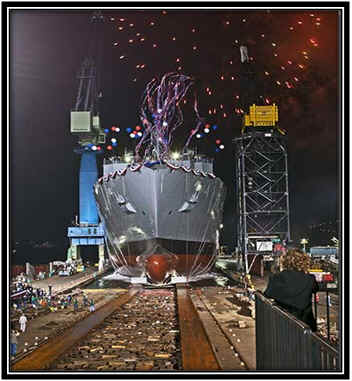
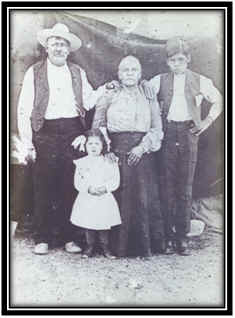
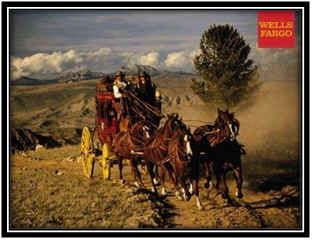
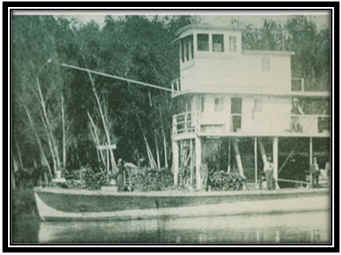
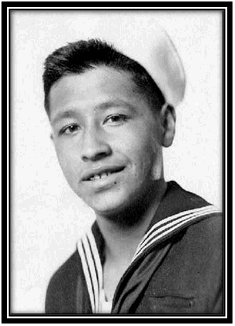

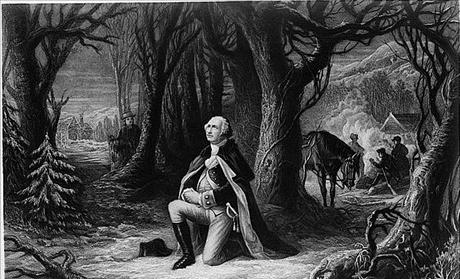
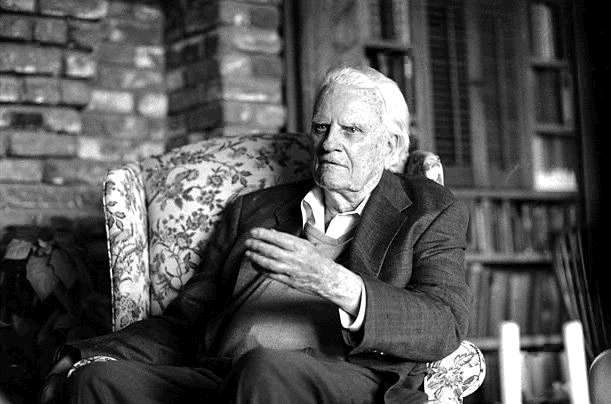


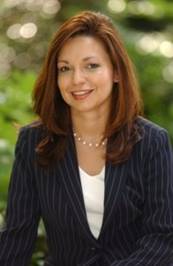





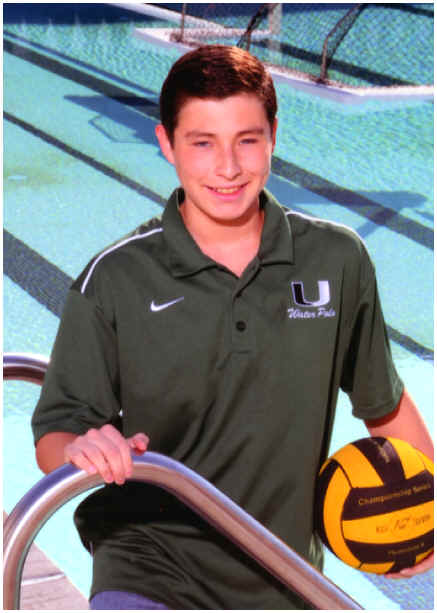 I
was born in Pomona, California to two traditional Catholic Hispanic
parents. At the age of four I moved from Pomona to Upland, California.
Since then I have grown up striving to be a good student and dedicated
member of the community. Throughout my life I have always looked towards
my parents for inspiration.
I
was born in Pomona, California to two traditional Catholic Hispanic
parents. At the age of four I moved from Pomona to Upland, California.
Since then I have grown up striving to be a good student and dedicated
member of the community. Throughout my life I have always looked towards
my parents for inspiration. 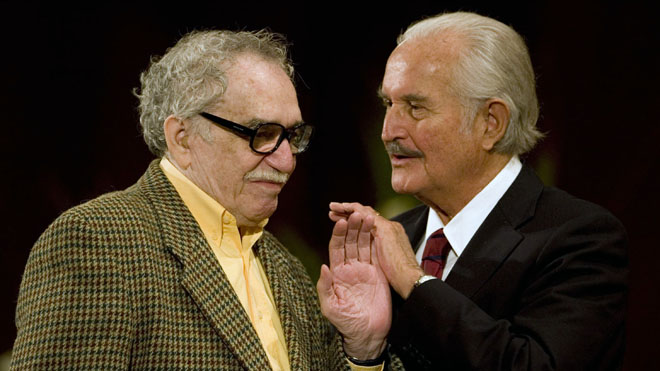
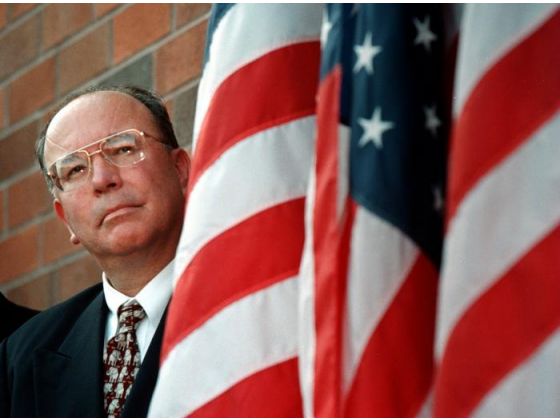
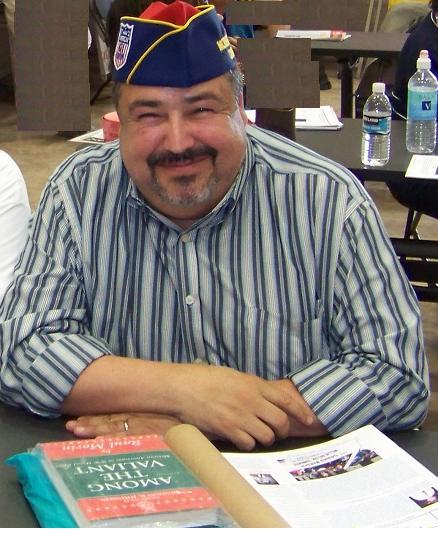
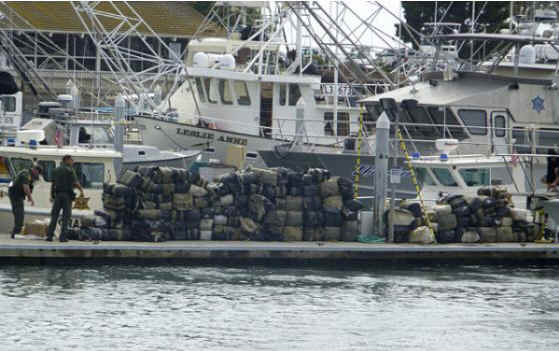

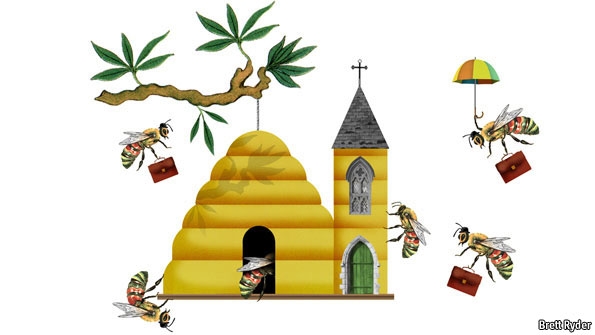
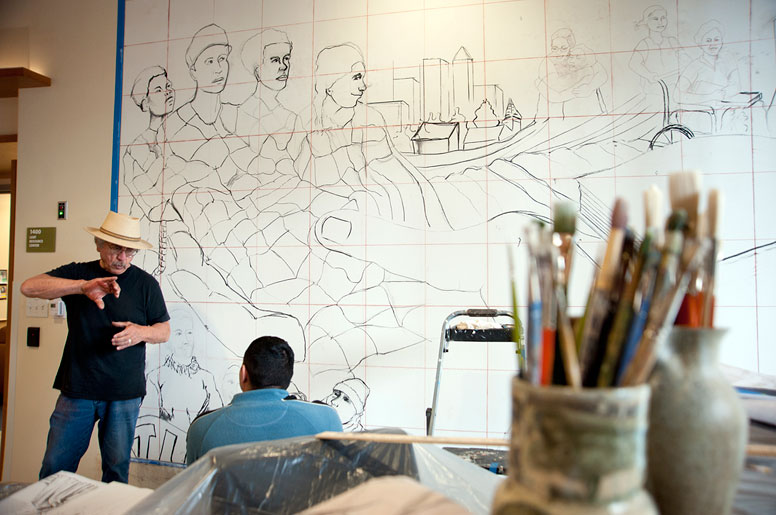


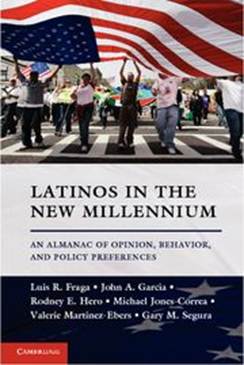
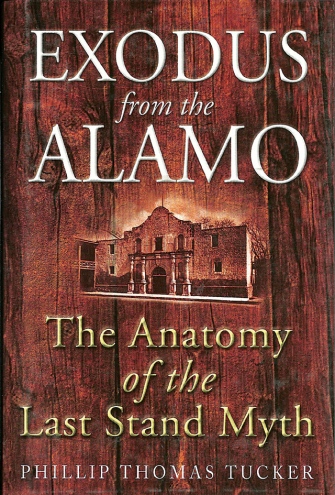
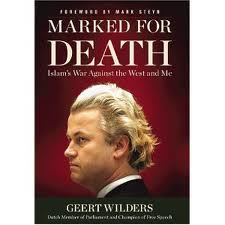 Marked for Death by Geert Wilders
Marked for Death by Geert Wilders
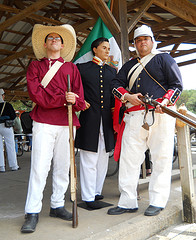
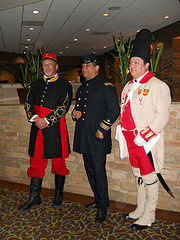
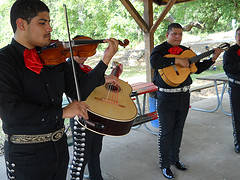
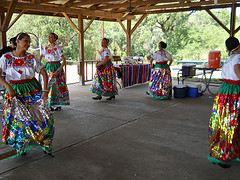
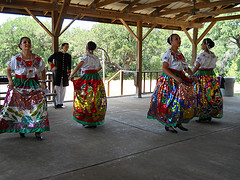
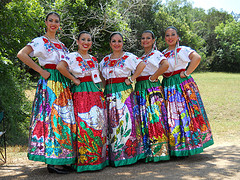
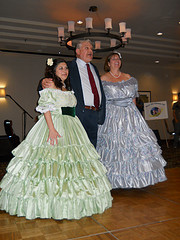
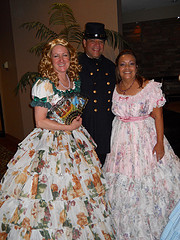
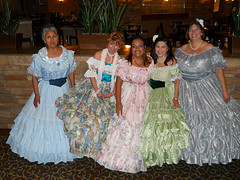
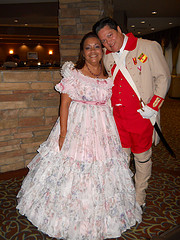
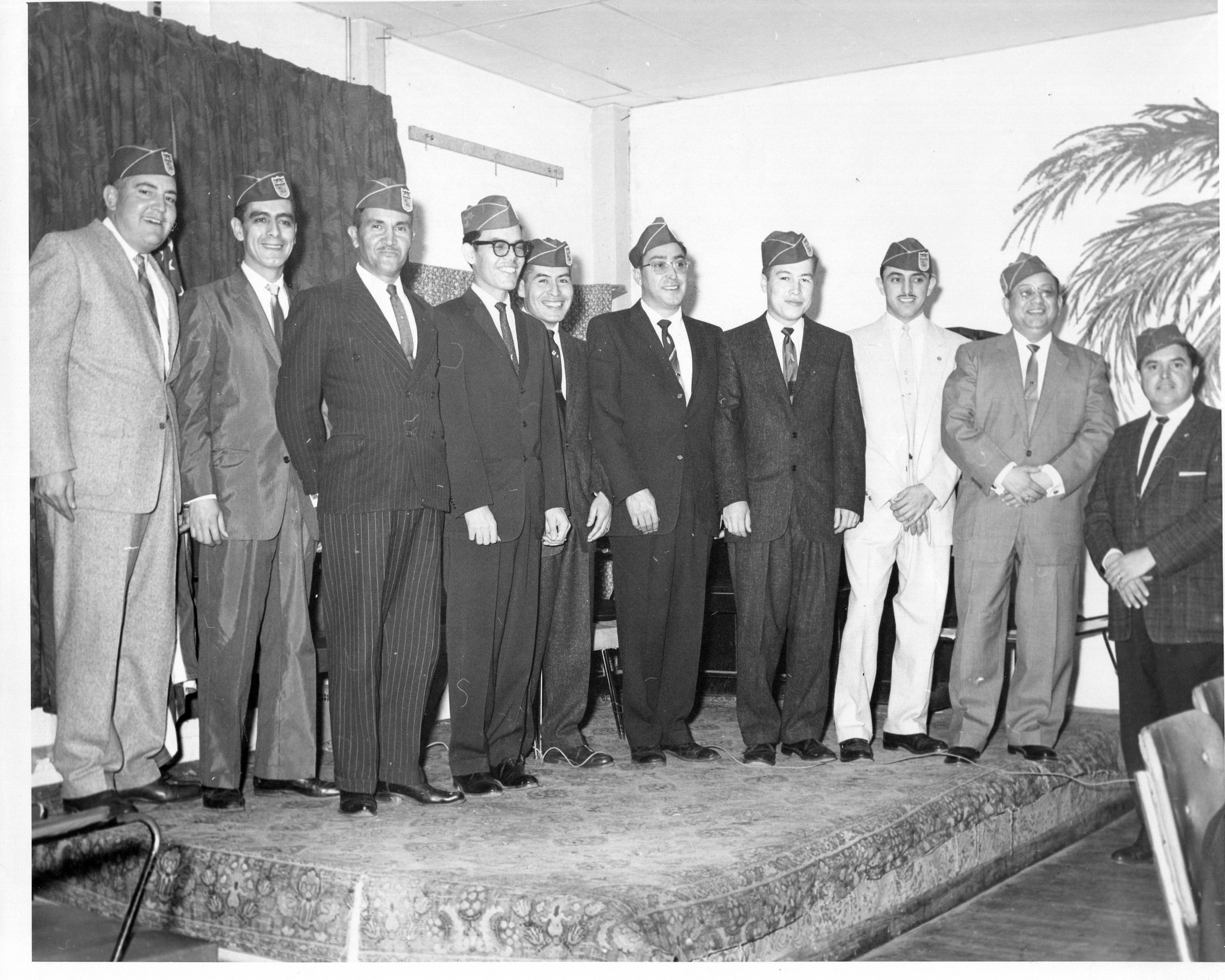
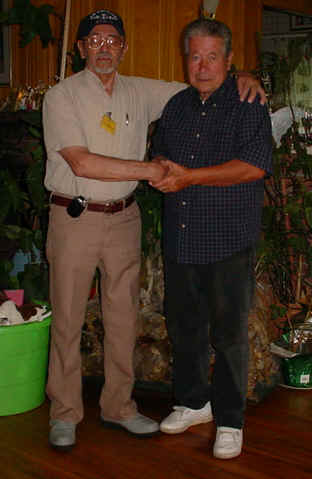

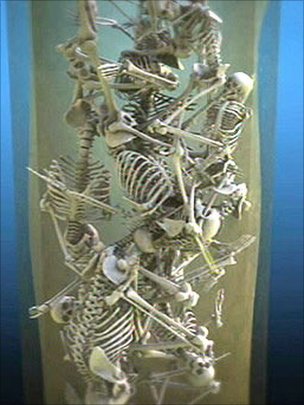


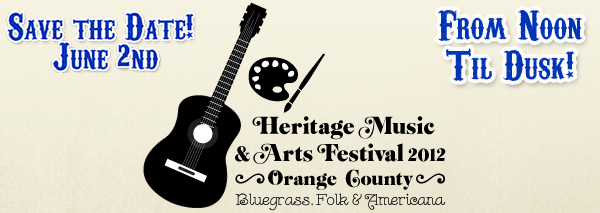
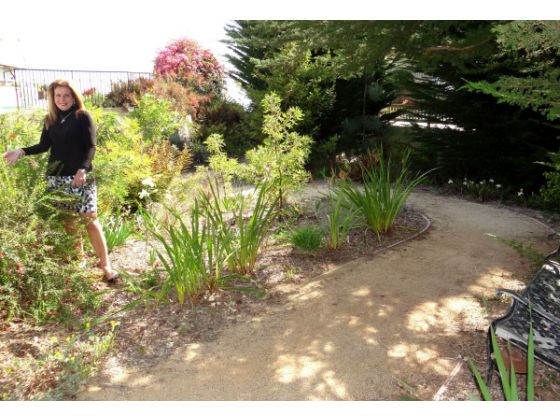




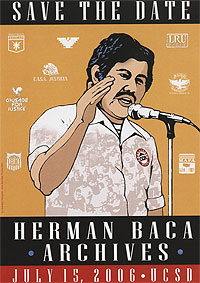
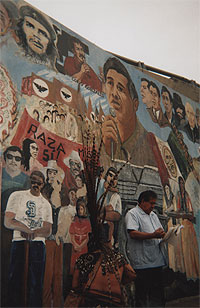
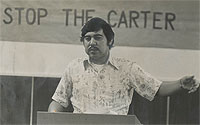

 The
Center for Latino Policy Research (CLPR) is an organized research
unit at the University of California, Berkeley. We form part of the
Institute for the Study of Societal Issues. CLPR was established in
1989 in response to a wave of student protests on campus demanding
that the University of California be more responsive to the needs of
the state's growing Latino population. In response, the state
legislature passed SCR43, which led to the creation of the
University of California Committee on Latino Research (UCCLR),
housed in UC's Office of the President (UCOP). UCCLR funded
Latino-focused centers on every UC campus (except UCSF). Each center
then also received campus support and/or funding. Unfortunately,
UCOP decided to eliminate UCCLR in 2008; CLPR continues to receive
support from the Berkeley campus, but at a significantly reduced
level. We remain the only Latino-focused research center on the
Berkeley campus.
The
Center for Latino Policy Research (CLPR) is an organized research
unit at the University of California, Berkeley. We form part of the
Institute for the Study of Societal Issues. CLPR was established in
1989 in response to a wave of student protests on campus demanding
that the University of California be more responsive to the needs of
the state's growing Latino population. In response, the state
legislature passed SCR43, which led to the creation of the
University of California Committee on Latino Research (UCCLR),
housed in UC's Office of the President (UCOP). UCCLR funded
Latino-focused centers on every UC campus (except UCSF). Each center
then also received campus support and/or funding. Unfortunately,
UCOP decided to eliminate UCCLR in 2008; CLPR continues to receive
support from the Berkeley campus, but at a significantly reduced
level. We remain the only Latino-focused research center on the
Berkeley campus.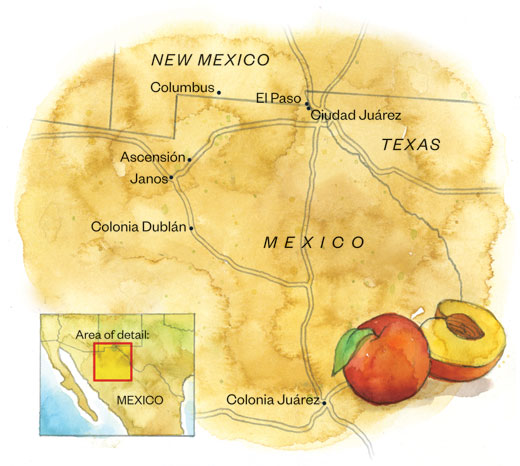
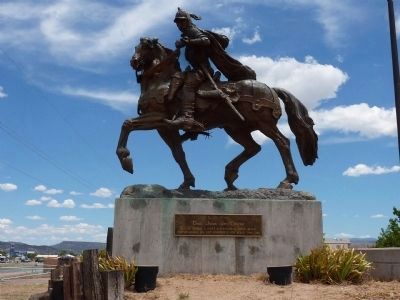
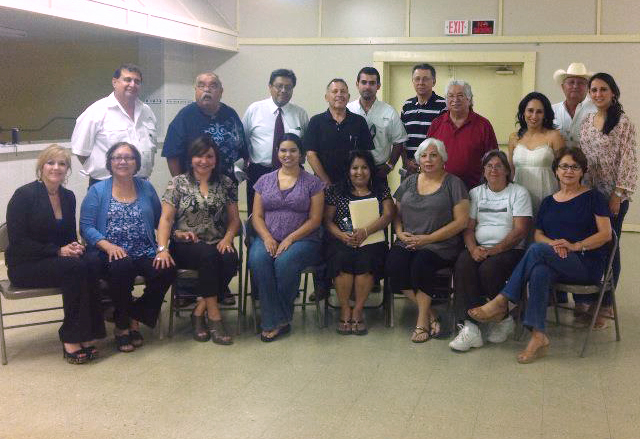


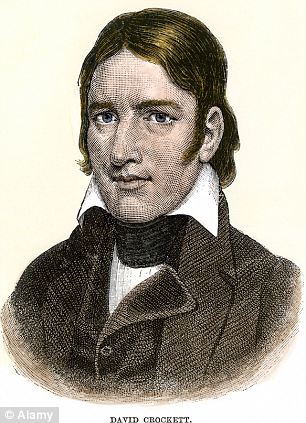
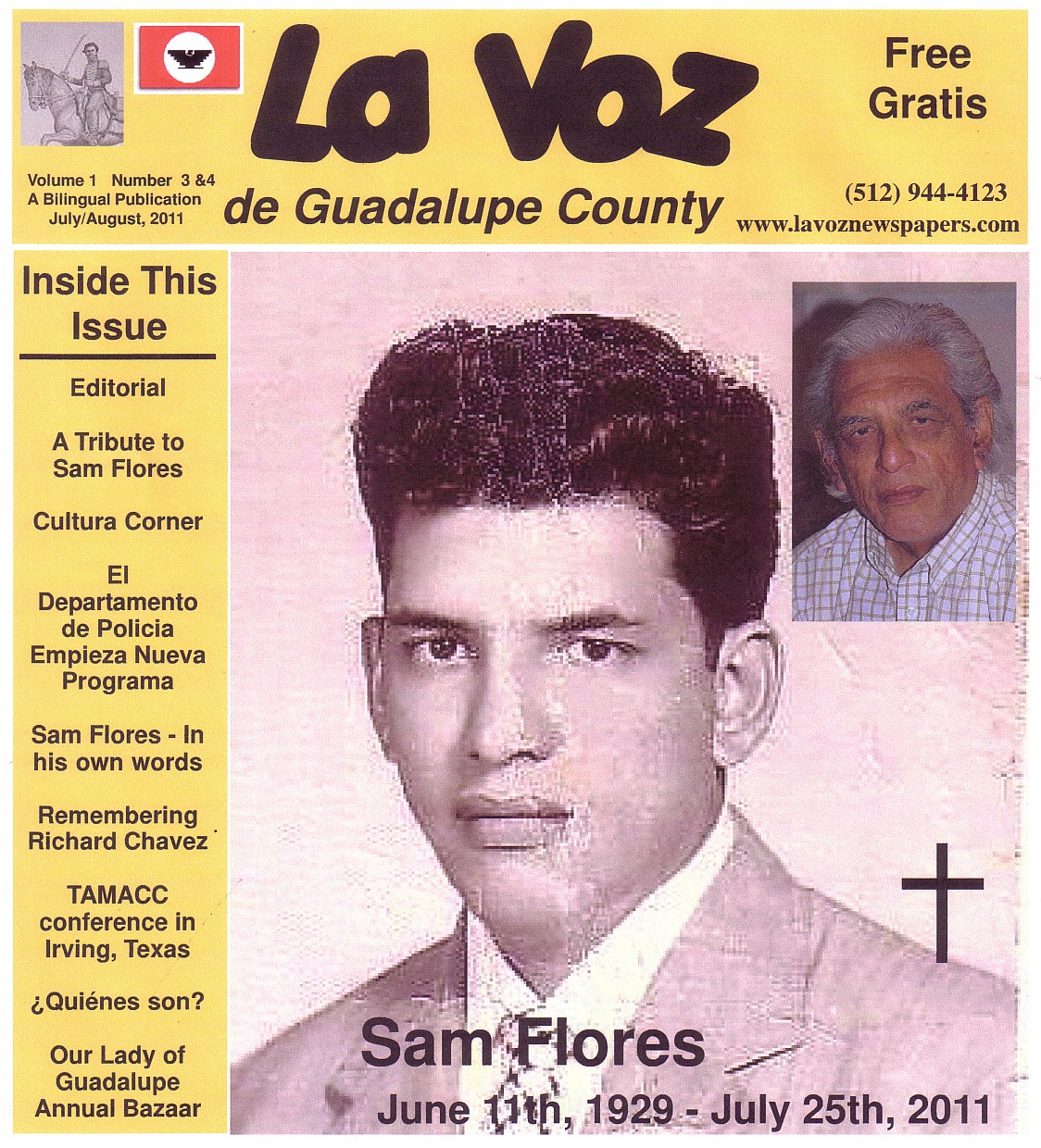
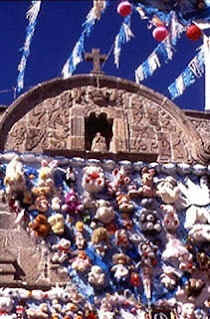

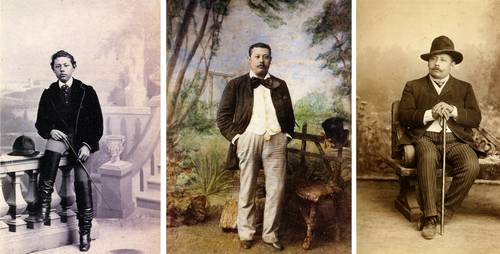
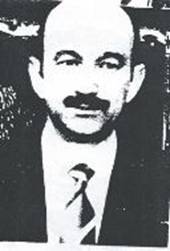
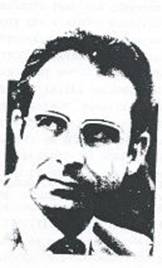
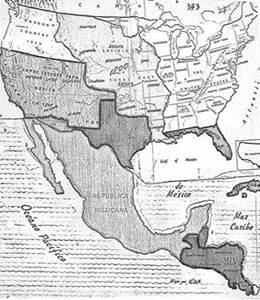
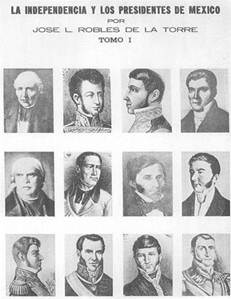
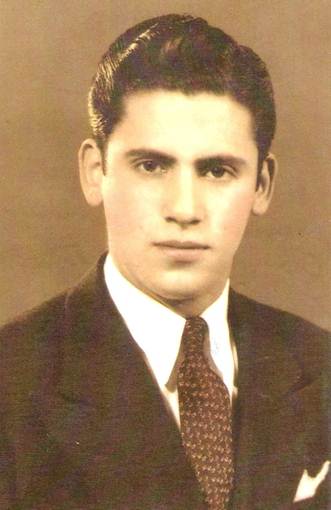
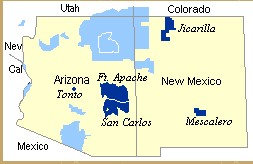
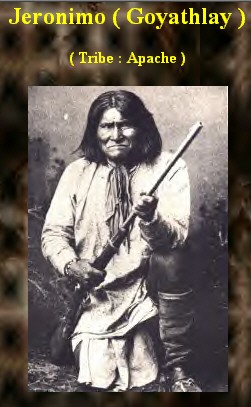 Geronimo
{jur-ahn'-i-moh}, or Goyathlay ("one who yawns"), was born
in 1829 in what is today western New Mexico, but was then still
Mexican territory. He was a Bedonkohe Apache (grandson of Mahko) by
birth and a Net'na during his youth and early manhood. His wife, Juh,
Geronimo's cousin Ishton, and Asa Daklugie were members of the Nednhi
band of the Chiricahua Apache.
Geronimo
{jur-ahn'-i-moh}, or Goyathlay ("one who yawns"), was born
in 1829 in what is today western New Mexico, but was then still
Mexican territory. He was a Bedonkohe Apache (grandson of Mahko) by
birth and a Net'na during his youth and early manhood. His wife, Juh,
Geronimo's cousin Ishton, and Asa Daklugie were members of the Nednhi
band of the Chiricahua Apache.
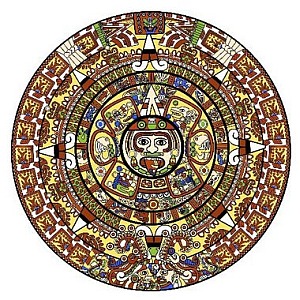
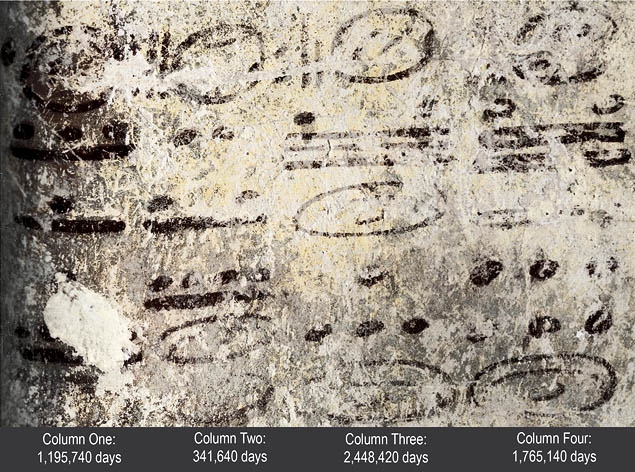
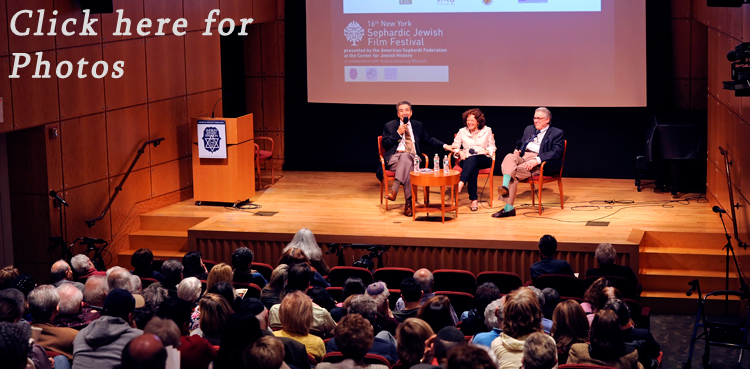

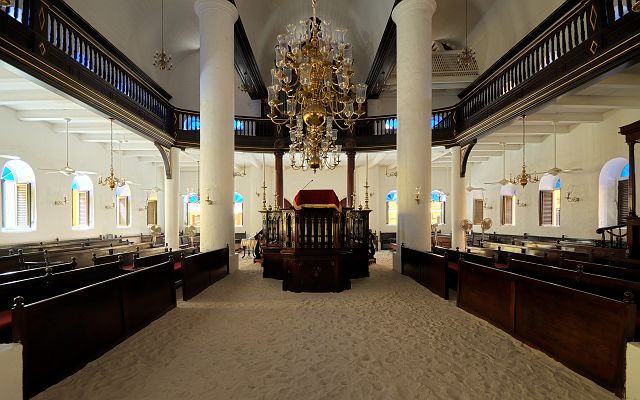
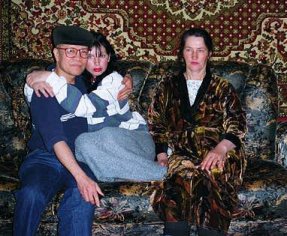

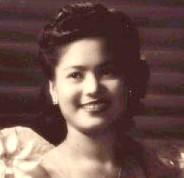 Blesilda Candida Epifania Guia Mueller Ocampo, popularly known as "Bessie" Ocampo made history as the first Filipina to enter the semi finals of the prestigious Miss Universe pageant. She won the Miss Philippines 1954.
Blesilda Candida Epifania Guia Mueller Ocampo, popularly known as "Bessie" Ocampo made history as the first Filipina to enter the semi finals of the prestigious Miss Universe pageant. She won the Miss Philippines 1954.  In 1954, Ma. Candida Blesilda "Bessie" Mueler
Ocampo, a UST architecture freshman, was the first Filipina to land among the 15 semi-finalists. She was in London as part of her prize for winning the Boys Town Miss Philippines contest when she was asked to represent the country in the 1954 Miss Universe Pageant.
In 1954, Ma. Candida Blesilda "Bessie" Mueler
Ocampo, a UST architecture freshman, was the first Filipina to land among the 15 semi-finalists. She was in London as part of her prize for winning the Boys Town Miss Philippines contest when she was asked to represent the country in the 1954 Miss Universe Pageant. 